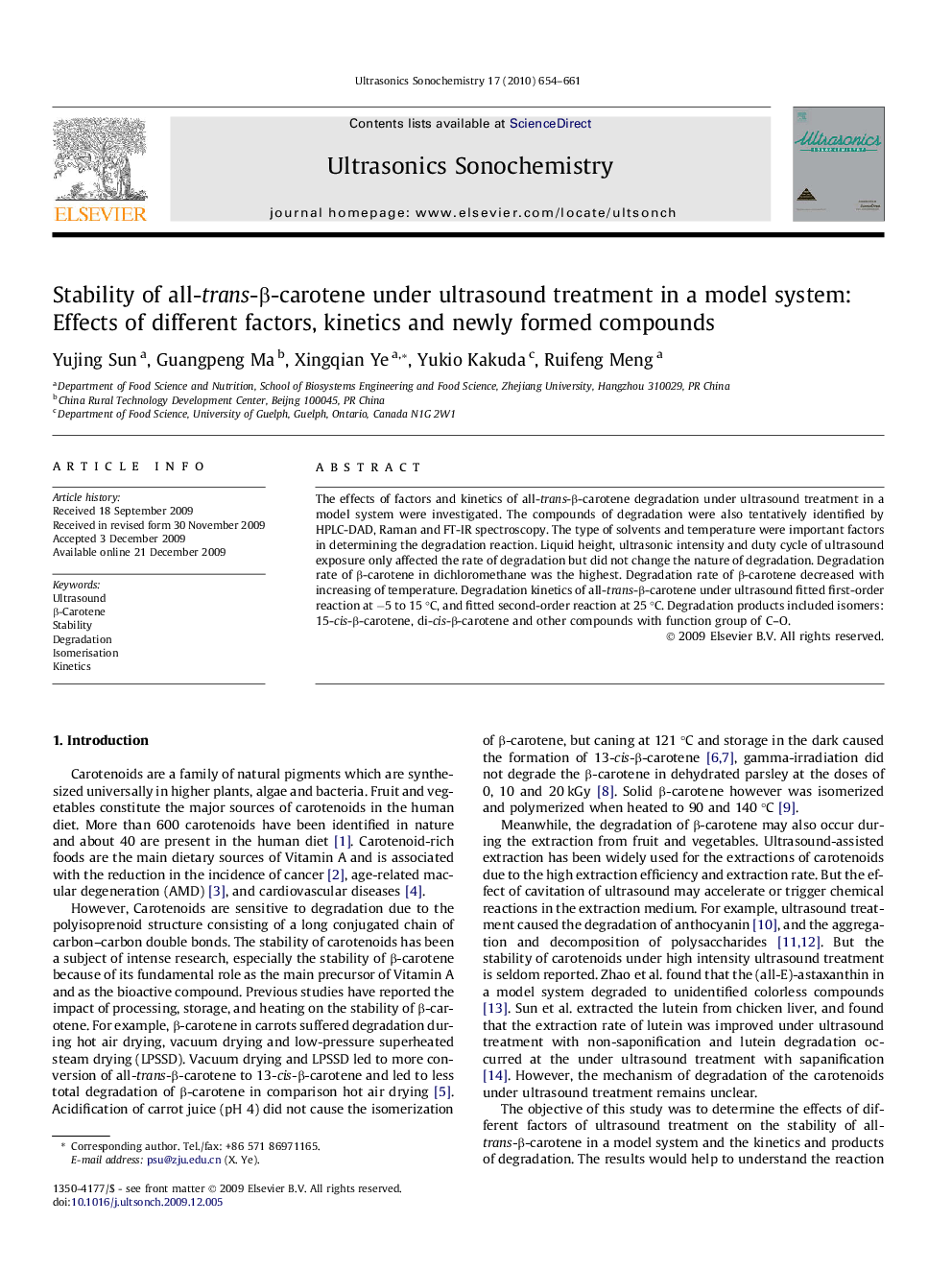| Article ID | Journal | Published Year | Pages | File Type |
|---|---|---|---|---|
| 1269392 | Ultrasonics Sonochemistry | 2010 | 8 Pages |
The effects of factors and kinetics of all-trans-β-carotene degradation under ultrasound treatment in a model system were investigated. The compounds of degradation were also tentatively identified by HPLC-DAD, Raman and FT-IR spectroscopy. The type of solvents and temperature were important factors in determining the degradation reaction. Liquid height, ultrasonic intensity and duty cycle of ultrasound exposure only affected the rate of degradation but did not change the nature of degradation. Degradation rate of β-carotene in dichloromethane was the highest. Degradation rate of β-carotene decreased with increasing of temperature. Degradation kinetics of all-trans-β-carotene under ultrasound fitted first-order reaction at −5 to 15 °C, and fitted second-order reaction at 25 °C. Degradation products included isomers: 15-cis-β-carotene, di-cis-β-carotene and other compounds with function group of C–O.
